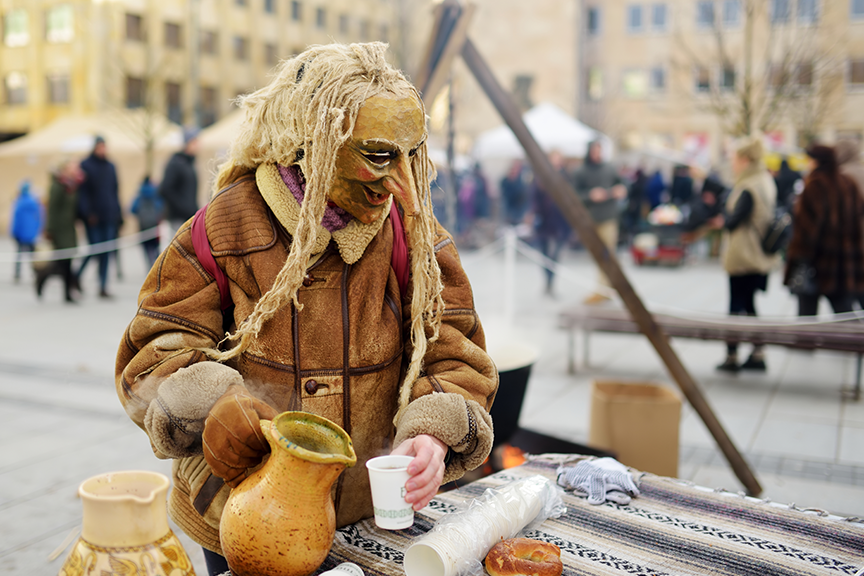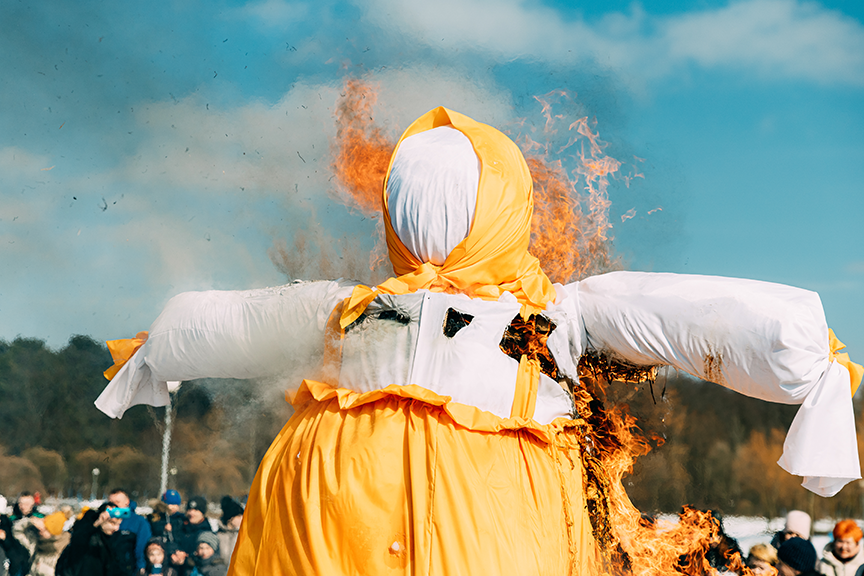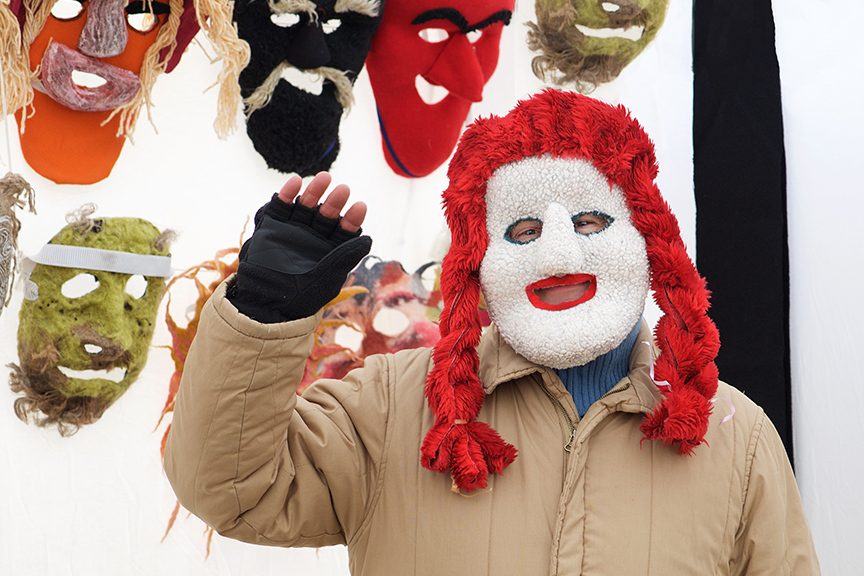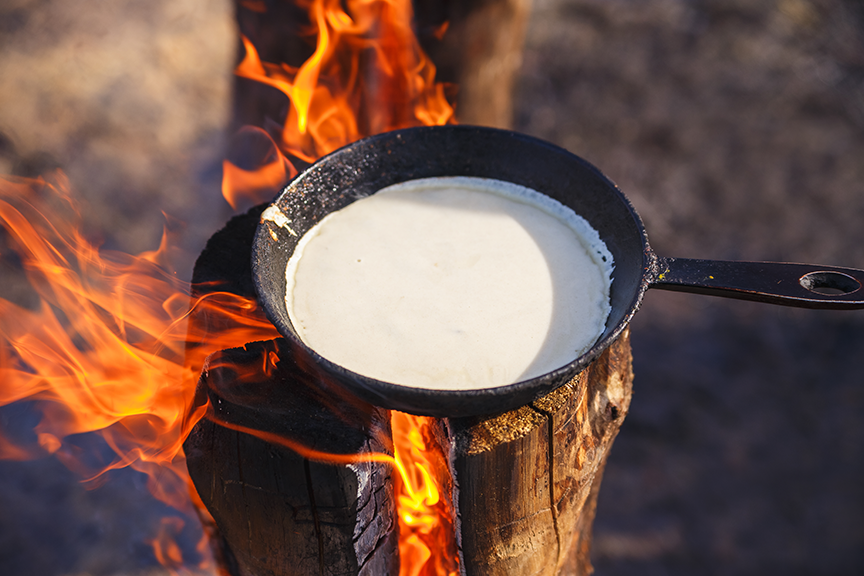Manage my booking
THE TRAVEL BLOG OF BALTIC TOURS

Mardi Gras in Lithuania
Mardi Gras, also known as “Užgavėnės,” is a traditional Lithuanian winter folk festival celebrated on the Tuesday before Ash Wednesday – the time before the start of Lent. It’s a day of laughter and pranks focusing on the rites and spells that drive out winter demons, awakening a frozen land from a deep sleep and giving it the power of fertility. The festival is full of folk humor, wisdom, and creativity. The main symbols of the celebration are masks, pancakes, the fight between Lašininis and Kanapinis, and the burning of Morė. We invite you to find out when and how Lithuanians and their ancestors drove out winter from their yards and country.



 Mardi Gras is celebrated in every region of Lithuania. The biggest celebration takes place in the Lithuanian folk museum near Kaunas city – Rumšiškės (the weekend before Mardi Gras). In this biggest open-air, ethnographic museum in Europe, you can not only celebrate Mardi Gras but also see a representation of 18th -20th-century Lithuanian regions: Dzūkija, Aukštaitija, Suvalkija, Žemaitija, and Lithuania Minor. So, if you are interested, here is the best and most traditional place in Lithuania to celebrate Mardi Gras.
Do you want to know more? Book your tour now and help Lithuanians drive out winter from their land!
Mardi Gras is celebrated in every region of Lithuania. The biggest celebration takes place in the Lithuanian folk museum near Kaunas city – Rumšiškės (the weekend before Mardi Gras). In this biggest open-air, ethnographic museum in Europe, you can not only celebrate Mardi Gras but also see a representation of 18th -20th-century Lithuanian regions: Dzūkija, Aukštaitija, Suvalkija, Žemaitija, and Lithuania Minor. So, if you are interested, here is the best and most traditional place in Lithuania to celebrate Mardi Gras.
Do you want to know more? Book your tour now and help Lithuanians drive out winter from their land!

Origins
It is believed that the origins of Mardi Gras date back to the days of Pagan gods, but due to a lack of old resources, we can’t say precisely when it began in Lithuania. Lithuanian information about this day reaches only the 17th century and describes the entertainment of students during Mardi Gras. Therefore, in the 20th century, Mardi Gras was forgotten in many regions, except in Žemaitija. Around 1985-1990, the festival was revived, and other regions adopted Žemaitija region traditions, which are closely linked to Christianity up to this day.Traditions
Mardi Gras has many traditions like playing games, singing, and dancing. The most important and popular one is a battle between the spring man called Kanapinis and the fat winter man Lašininis, in which Kanapinis always defeats Lašininis, thus announcing the upcoming spring, the beginning of the working season, and the end of laziness. At the end of the festival, the symbol of winter called Morė is burned, confirming that winter is leaving the land and spring is returning to Lithuania, as well as burning the flaws and sins of the people.
Masks
Masks are one of the main attributes of Mardi Gras. The most important thing is that the Mardi Gras garment would be unusual; it must stand out and scare the winter. People dress up and hide under various themed masks. Goat, bear, grim reaper, beggar, Gipsy, and Jewish masks are especially popular. Therefore, disguised people who impersonate mystical creatures, beggars, Jews, and Gypsies dance and sing the song “Winter, winter-run out of the yard.” It is important to mention that disguises were not meant to make fun of but to emphasize that they were from another world.
Food
During the Mardi Gras festival, one is allowed to eat a rich and oily meal for the last time because, in Christian culture, the time of fasting begins on Wednesday. In the past, it was customary to eat meat 7-12 during the festival. It is believed it will give you strength and a sense of fullness all year round. The main dish for Mardi Gras was not only pancakes but also pork head, a fatty mixture of groats and peas, meat jelly, potatoes, and donuts. Every household was obliged to have baked pancakes, which symbolize the sun. In case a large group of children or people in costumes will request it in exchange for a poem or acting. Mardi Gras is celebrated in every region of Lithuania. The biggest celebration takes place in the Lithuanian folk museum near Kaunas city – Rumšiškės (the weekend before Mardi Gras). In this biggest open-air, ethnographic museum in Europe, you can not only celebrate Mardi Gras but also see a representation of 18th -20th-century Lithuanian regions: Dzūkija, Aukštaitija, Suvalkija, Žemaitija, and Lithuania Minor. So, if you are interested, here is the best and most traditional place in Lithuania to celebrate Mardi Gras.
Do you want to know more? Book your tour now and help Lithuanians drive out winter from their land!
Mardi Gras is celebrated in every region of Lithuania. The biggest celebration takes place in the Lithuanian folk museum near Kaunas city – Rumšiškės (the weekend before Mardi Gras). In this biggest open-air, ethnographic museum in Europe, you can not only celebrate Mardi Gras but also see a representation of 18th -20th-century Lithuanian regions: Dzūkija, Aukštaitija, Suvalkija, Žemaitija, and Lithuania Minor. So, if you are interested, here is the best and most traditional place in Lithuania to celebrate Mardi Gras.
Do you want to know more? Book your tour now and help Lithuanians drive out winter from their land!


Professionally educated and highly experienced in tourism management, Rasa is passionate about encouraging guests to explore the Northeastern region of Europe in the most attractive way. She has been working in the tourism industry since 2000, assisting customers from 64 countries, and she loves doing it!
ASK A QUESTION